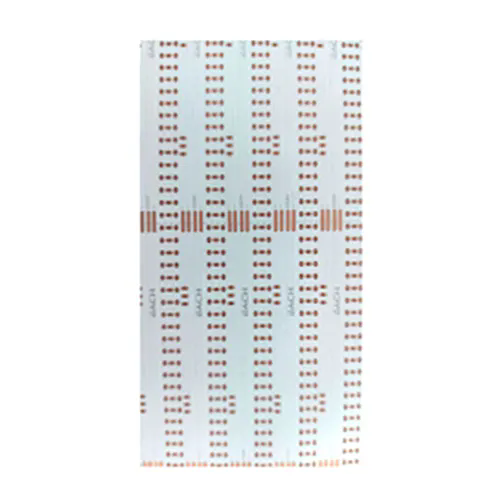Why Is the Single-Sided Flexible PCB a Game-Changer in Electronics?
2024-11-20
As the demand for compact, lightweight, and efficient electronic devices grows, manufacturers are constantly looking for innovative solutions to meet these needs. One such solution is the Single-Sided Flexible PCB. But what makes it so revolutionary? Let’s explore its structure, benefits, and applications in modern electronics.
What Is a Single-Sided Flexible PCB?
A single-sided flexible PCB is a printed circuit board made of a flexible substrate, such as polyimide or polyester, with copper circuitry etched on one side. Unlike rigid PCBs, it can bend, twist, or fold without compromising its electrical performance.
This flexibility allows for creative designs and applications where traditional rigid PCBs would be impractical.
How Is It Structured?
A single-sided flexible PCB typically consists of:
1. Base Film: A flexible material that acts as the foundation.
2. Conductive Layer: A thin copper foil etched into circuits.
3. Protective Layer: A coverlay or solder mask to shield the circuits from environmental damage.
This simple structure ensures reliability while keeping the board lightweight and versatile.
What Are the Key Advantages?
1. Flexibility:
- The primary benefit is its ability to bend or fold, making it ideal for compact designs.
2. Lightweight and Thin:
- Its thin profile and minimal materials reduce the overall weight of the device.
3. Durability:
- With proper design, these PCBs can withstand repeated flexing without failure.
4. Cost-Effectiveness:
- For certain applications, single-sided flexible PCBs are more affordable compared to multi-layer or rigid-flex alternatives.
5. Space-Saving:
- Their adaptability enables designers to fit circuits into unconventional spaces.
Where Are Single-Sided Flexible PCBs Used?
These PCBs are widely used across various industries, including:
1. Consumer Electronics:
- Found in smartphones, wearables, and foldable devices where space is at a premium.
2. Automotive Industry:
- Used in dashboards, lighting systems, and sensors due to their vibration resistance.
3. Medical Devices:
- Essential in compact devices like pacemakers and hearing aids.
4. Aerospace:
- Ideal for lightweight and reliable solutions in aircraft and satellites.
What Challenges Come with Using Single-Sided Flexible PCBs?
1. Design Complexity:
- Requires careful planning to optimize the layout for flexibility and performance.
2. Thermal Management:
- Flexible materials can be more sensitive to heat, necessitating specialized processes.
3. Material Costs:
- High-quality flexible substrates can increase production costs for certain designs.
Despite these challenges, advances in manufacturing are making flexible PCBs more accessible and efficient.
What Does the Future Hold for Flexible PCBs?
As industries push the boundaries of innovation, single-sided flexible PCBs are poised to play a critical role. Emerging trends like flexible displays, foldable devices, and wearable technology rely heavily on the adaptability and reliability of these PCBs.
Moreover, with the rise of the Internet of Things (IoT), flexible PCBs will be essential in creating interconnected, compact, and durable devices.
Conclusion
The single-sided flexible PCB is revolutionizing how we design and build electronic devices. Its versatility, lightweight design, and cost-effectiveness make it indispensable across various industries.
So, whether you’re developing a cutting-edge wearable or reimagining automotive systems, the single-sided flexible PCB offers the innovation needed to bring your ideas to life. Could this be the future of electronics? It certainly seems so!



